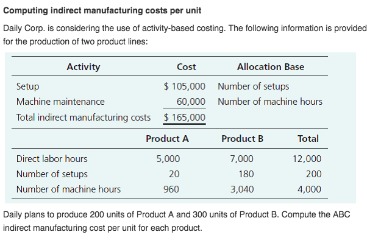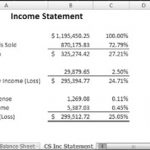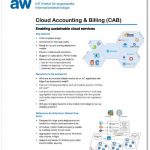
Note charges on your bank statement that you haven’t captured in your internal records. For example, if you run a small retail store, you may keep a point-of-sale ledger, or similar software, that records daily transactions, inventory, and in-store balances. You’ll also have an external bank account that tracks deposits, purchases, and long-term balances.
Consolidation and account reconciliation
We’ve all heard of small businesses that lose tens of thousands, even hundreds of thousands, to embezzlement. Many of those thefts could have been halted in their tracks immediately if the bank accounts had been reconciled regularly. According to Investopedia, the definition of account reconciliation is “an accounting process that compares two sets of records to check that figures are correct and in agreement. Account reconciliation also confirms that accounts in the general ledger are consistent, accurate, and complete.” Reconciliation provides a check on the completeness of your financial data. If you use cloud accounting software, this can be made relatively easy by using the reconciliation function. For example, if you are conducting cash reconciliations this process will involve simply matching activity from the bank feed to the transactions on your bank ledger, and then posting any new reconciling transactions.
How Dragonfly Pond Works leveled up expense management with Ramp

It is essential to reconcile the balance of accounts payables due to short payments, disputes, early payment discounts, and much more. This ensures smooth operations, supplier relations, market reputation, and much more. Often the cash balance in the book of accounts and the bank accounts may not match.
How Girl Scouts of the Green & White Mountains saved 20+ hours per month with Ramp
These steps can vary depending on what accounts you are reconciling, but the underlying premise is always the same – compare your ending balance against supporting documentation and make any adjustments as needed. Invoice reconciliation also compares two sets of documents for accuracy, but instead of ending balances, you’re comparing invoice details against a hard copy. Account reconciliation is a financial reconciliation, with no real difference, except for how the results of the reconciliation process will be used. A profit and loss statement, also known as an income statement summarizes revenue and expenses that have been incurred during a specific period. Accrual accounting is more complicated but provides a better insight into the financial health of your business. For example, when you pay your utility bill, you would debit your utility expense account, which increases the balance and credit your bank account, which decreases the balance.

- The company reconciles its accounts every year to check for any discrepancies.
- And, because Clio integrates with best-in-class accounting tools like QuickBooks and Xero, you can use them together to further simplify reconciliations.
- If you decide to hire someone to help, make sure they are following GAAP, or have credentials and experience that you trust.
- Again, the left (debit) and right (credit) sides of the journal entry should agree, reconciling to zero.
Many people reconcile their checkbooks and credit card accounts periodically by comparing their written checks, debit card receipts, and credit card receipts with their bank and credit card statements. Check that all outgoing funds have been reflected in both your internal records and your bank account. Whether it’s checks, ATM transactions, or other charges, subtract these items from the bank statement balance.

Bank Statement Reconciliation FAQs
This helps ensure that the company pays vendors and suppliers accurately and on time. Accounts receivable is the amount that your customers owe you for the goods sold or services provided. You will need to give special importance to reconciling accounts receivables to ensure steady cash flow and good customer relations to name just a few reasons. You will need to check the bank and ledger balances to ensure that there are no short payments, deductions, disputes, and to stop credit facility for defaulting customers. Depending on the number of discrepancies, you may need to create a supporting schedule that details the differences between your internal books and bank accounts. Check that all incoming funds have been reflected in both your internal records and your bank account.
The spreadsheet should include beginning balance, additions, subtractions, and any adjustments required for recording to agree with the general ledger ending balances for capital accounts. The allowance for obsolescence and the inventory valuation at lower of cost or market are reconciling items to consider in the inventory recording https://www.accountingcoaching.online/accrual-accounting/ and reconciliation processes. The important thing is to establish internal processes for account reconciliation and adhere to those processes. Whether you’re a small business owner working with multiple sub-ledgers or a multi-million dollar business using an ERP system, reconciling your accounts will always be necessary.

Using accounting software will make it much easier to reconcile your balance sheet accounts regularly. Finally, look for the transactions that are in the general ledger, but not on the statement, and vice versa. Do you need to record the bank fees or credit card interest in the general ledger? Add and subtract these as appropriate until you can get both sides to match. Did you know there’s more than one way to reconcile your accounting records?
Next, match the entries in the general ledger with transactions on the statement. Adding to the challenge, sometimes an entry in the general ledger may correspond to two or more entries in a bank statement, or vice versa. Later that day, you get an urgent text from your bank that your account is overdrawn by $5,000. If you had performed regular bank reconciliations, you would have known about that check and to keep your eyes peeled for it.
This reconciliation involves rolling forward fixed asset balances, accounting for purchases, sales, retirements, and accumulated depreciation. It makes sure that fixed asset and accumulated depreciation balances accurately offset each other in the general ledger. The accounting team in an organization is responsible for reconciling accounts at the end of each financial period to ensure that the GL balance is complete and accurate. https://www.accountingcoaching.online/ It is a general practice for businesses to create their balance sheet at the end of the financial year as it denotes the state of finances for that period. However, you need to record financial transactions throughout the year in the general ledger to be able to put together the balance sheet. Reconciliation is an accounting procedure that compares two sets of records to check that the figures are correct and in agreement.
Secondly, account reconciliation helps identify fraudulent activity committed by employees, dishonest customers, vendors, suppliers, or cyber-thieves. Duplicate checks, unauthorized credit card activity, or altered invoices are some common practices that can be identified through account reconciliation. Bank reconciliations involve comparing the business’s financial statements cost of debt with the statements it receives from the bank. This helps to ensure that the business’s records accurately reflect the transactions that have taken place in its bank account. Here, they’d match records like receipts or cheques with entries in the general ledger. This is a bit like carrying out a personal accounting reconciliation using credit card receipts and a statement.
